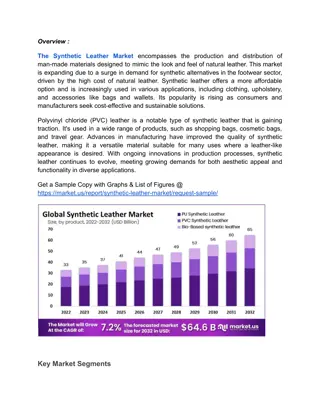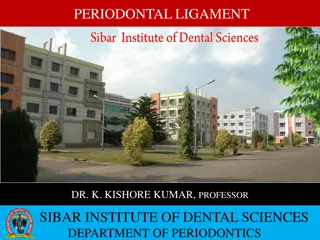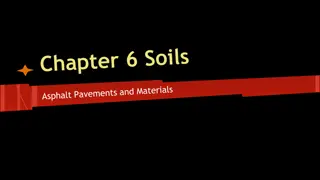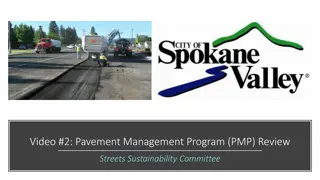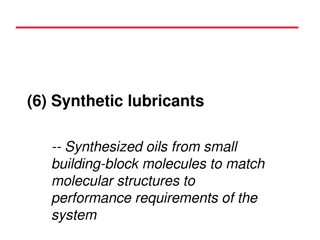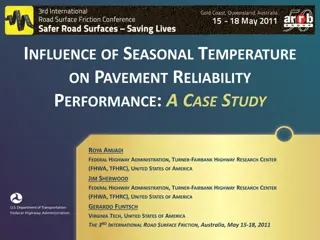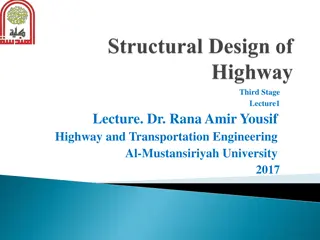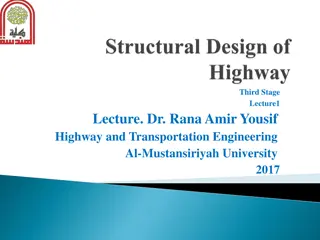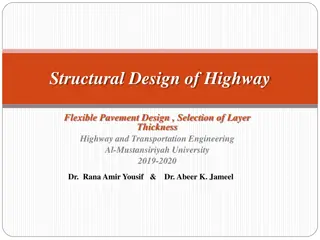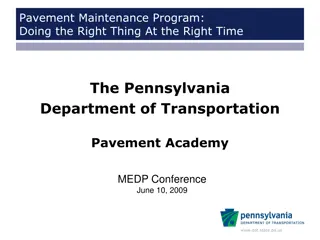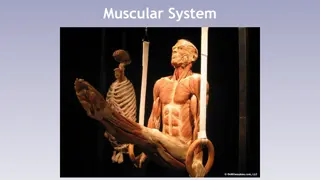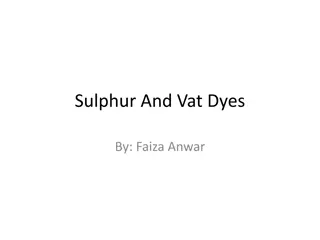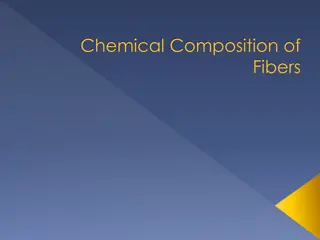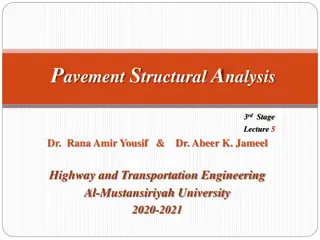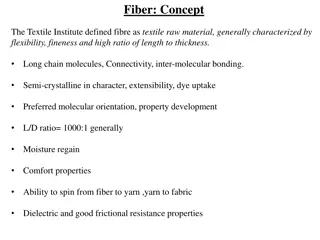- "Development of Pavement-Specific Structural Synthetic Fibers - TAP Meeting Insights
- The TAP meeting on the development of pavement-specific structural synthetic fibers held on November 3, 2021, highlighted key benefits of fibers in pavements, such as increased load transfer efficiency and reduced cracking. Various industry partners and experts discussed the participation of fibers in pavements to bridge cracks and maintain structural integrity. The overall goal and project objectives focus on determining forces applied on fibers and identifying characteristics that can be modified in concrete and fibers. Popular applications in concrete pavements include ultra-thin overlays and full-depth replacement projects, emphasizing the cost-effectiveness and sustainability of fiber-reinforced concrete solutions.
Download Presentation

Please find below an Image/Link to download the presentation.
The content on the website is provided AS IS for your information and personal use only. It may not be sold, licensed, or shared on other websites without obtaining consent from the author.If you encounter any issues during the download, it is possible that the publisher has removed the file from their server.
You are allowed to download the files provided on this website for personal or commercial use, subject to the condition that they are used lawfully. All files are the property of their respective owners.
The content on the website is provided AS IS for your information and personal use only. It may not be sold, licensed, or shared on other websites without obtaining consent from the author.
E N D
Presentation Transcript
TOWARDS THE DEVELOPMENT OF PAVEMENT-SPECIFIC STRUCTURAL SYNTHETIC FIBERS TAP Meeting on Nov 3, 2021 Manik Barman [UMD] Pranav Sharma [UMD] Heena Dhasmana [UMD] Principal Investigator Graduate Student Post-doc Gerald Welch [Forta Corp.] Clifford Macdonald [Vigilant Enterprise LLC] Industry Partners David Lim [CALTRANS] Technical Liaison
TAP MEMBERS Tim Andersen, MnDOT Tom Burnham, MnDOT Rob Golish, MnDOT David Lim, Caltrans (TL) Maria Masten, MnDOT Angel Mateos, UC-Berkley Mike Radler, The Dow Chemical Company Peter Taylor, Iowa State CP Tech Center Thanks to all of you for the support and guidance
KEY BENEFITS OF FIBERS IN PAVEMENTS Two major benefits of fibers in pavements are: 1. Increased load transfer efficiency Reduced faulting, decreased roughness (IRI) 2. Reduced cracking (holds cracks tight)
POPULAR APPLICATIONS IN CONCRETE PAVEMENTS Ultra-thin and thin concrete overlays and new pavements According to the CPTech Center, fiber-reinforced concrete can offer a cost-effective, sustainable solution for resurfacing and rehabilitating existing pavements. Either as overlays or full-depth replacement pavements, state DOTs and other engineering groups are rapidly adopting macro- synthetic fibers into their designs, specifications, and experimental projects for road and airfield pavements.
OVERALL GOAL AND PROJECT OBJECTIVES Overall Goal: We want pavement-specific fibers Objectives / Tasks of the current project: Task1: Determining the forces applied on fibers due to vehicular and environmental loads. Task 2: Identifying the characteristics that can most easily be changed in both or either the concrete and fibers.
TASK 1: FORCES APPLIED ON FIBERS FEM model of FRC pavements Determine desired properties of FRC Determine forces applied on fibers MnROAD field data Manik Barman
PARTICIPATION OF FIBERS IN PAVEMENTS If pavements crack or joints deploy, then fibers bridge the cracks and keeps cracks tight. Because of the seasonal temperature change, slabs expand and contract. Fibers at the deployed joints stretch when slabs contract. Base Friction Manik Barman Note: Mostly, fibers are activated only when the concrete is stressed, and micro or macro cracks are formed.
PARTICIPATION OF FIBERS IN PAVEMENTS (contd.) When pavements curl and warp because of the daily temperature cycle, fibers at joints offer resistance. Downward curling due to positive temperature gradient Upward curling due to negative temperature gradient Manik Barman
PARTICIPATION OF FIBERS IN PAVEMENTS (contd.) Fibers offer dowel action in transferring wheel load from one slab to the other. Driving Direction Wheel Load
PARTICIPATION OF FIBERS IN PAVEMENTS (contd.) Thin slabs are lighter, and they may move because of vehicle traction. Fibers stretch or offer resistance against rolling friction. Driving Direction Vehicle Traction Rolling frictional force Tom Burnham s calculation: 12 x15 x6 slab weighs 13,500 lbs > 50% of front axle weight of truck (6000 lbs). A 6 x6 x5 slab weighs approximately 2,250 lbs < 50% of the front axle weight of the truck (6000 lbs). Thanks, Tom!
PARTICIPATION OF FIBERS IN PAVEMENTS (contd.) Thin slabs are lighter, and they may move because of vehicle traction. Fibers stretch or offer resistance against rolling friction. https://www.engineeringtoolbox.com/rolling-friction-resistance-d_1303.html
PARTICIPATION OF FIBERS IN PAVEMENTS (contd.) Combination of all possible forces Load Driving Direction Force Base Friction Load Driving Direction Force Base Friction
FINITE ELEMENT (FE) MODELING Geometry: 6-slab model, geometric futures are similar to Cells 506-806, MnROAD. Materials: Matched with, MnROAD, Cells 506-806. Vehicle load: Two rectangular imprints on the outer wheel path, load magnitude = one standard wheel load (9 kip), pressure = 93.75 psi Environmental load: Temperature gradient, uniform temperature change (temperature at setting time ~ seasonal temperature)
JOINT (SLAB TO SLAB) INTERFACE MODELING Joint stiffness due to aggregate interlock (Agg*) (Barman and Vandenbossche, 2016) (Ioannides & Korovesis, 1990) Joint stiffness = Agg* = Agg/kl
JOINT (SLAB TO SLAB) INTERFACE MODELING (contd.) Joint stiffness due to aggregate interlock Stiffness only along the vertical direction is considered for the aggregate interlock MATRIX27 spring MATRIX27 is an element whose geometry is undefined but whose elastic kinematic response can be specified by stiffness, damping, or mass coefficients in matrix form
JOINT (SLAB TO SLAB) INTERFACE MODELING (contd.) Embedded fiber stiffness (function of fiber pullout and anchorage behavior) 0.25 Vf fibers, macro synthetic Embedded fiber stiffness will eventually be the output from FEM modeling; how much stiffness do we need to get better performance?
JOINT (SLAB TO SLAB) INTERFACE MODELING (contd.) Joint stiffness due to both aggregate interlock and fiber stiffness Stiffness considered in the x, y and z directions MATRIX27 represents an arbitrary element whose geometry is undefined but whose elastic kinematic response can be specified by stiffness, damping, or mass coefficients in matrix form
TEMPERATURE GRADIENTS AND UNIFORM TEMPERATURE CHANGE Temperature gradients and uniform temperature changes were established from the MnROAD cells thermocouple data Cell 606/6 inch slab Temp Grad in F/in Surface Temp Temp. Diffrences Night time Day time Night time 87.30 104.85 14.59 27.76 -12.73 2.63 19.15 32.04 78.96 93.50 Day time Night time Day time 118.24 89.98 68.38 49.72 64.29 37.41 82.11 50.02 88.93 56.84 Top Summer -2.92608 4.70916 17.56 28.25 Bottom Top Bottom Top Bottom Top Bottom Top Bottom Fall -2.19456 3.10896 13.17 18.65 Winter -2.56032 4.48056 15.36 26.88 Early Spring -2.14884 5.34924 12.89 32.10 Spring -2.42316 5.34924 14.54 32.10
FE MODEL EXAMPLE (TEMPERATURE GRADIENT ONLY) Single slab, with curling (Temperature difference between top and bottom of slab = 10oF) Verified with results using Westergaard s equation. Example of the displacement contour of a 6-slab model (Temperature difference between top and bottom of slab = 10oF) DISPLACEMENT IN VERTICAL DIRECTION
FE MODEL EXAMPLE (LOAD ONLY) MAX STRESS DISPLACEMENT IN VERTICAL DIRECTION (DEPTH)
FE MODEL EXAMPLE (UNIFORM TEMPERATURE CHANGE) Cell 806, Early spring, Temperature gradient = 0oF, Setting temperature = 71.6oF, Current pavement temperature = -30oF Cell 806, Early spring, Temperature gradient = 0oF, Setting temperature = 71.6oF, Current pavement temperature = 120oF (slabs shrink) (slabs expand) DISPLACEMENT OF SLABS ALONG THE DIRECTION OF TRAFFIC
FE MODEL EXAMPLE (INFLUENCE OF FIBERS) Geometry: Cell 806; slab thickness = 5 in; base = 11 in; Early spring, LTE ~0% (no aggregate interlock), No temperature gradient. Fiber stiffness = 11,653 lbs/in Fiber stiffness = 2900 lbs/in Fiber stiffness = 167,023 lbs/in A hypothetical case: no aggregate interlock, slabs are connected only using fibers DISPLACEMENT IN Z-DIRECTION (DEPTH)
FE MODEL EXAMPLE (INFLUENCE OF FIBERS) Geometry: Cell 806; slab thickness = 5 in; base = 11 in; Early spring, LTE ~50%; No temperature gradient. Fiber stiffness = 2,900 lbs/in Fiber stiffness = 167,023 lbs/in Fiber stiffness = 11,653 lbs/in Aggregate interlock considered; fiber matrix stiffness considered DISPLACEMENT IN Z-DIRECTION (DEPTH)
FE MODEL EXAMPLE (INFLUENCE OF FIBERS) Geometry: Cell 806; slab thickness = 5 in; base = 11 in; Early spring, LTE ~50%, No temperature gradient. Fiber stiffness = 2900 lbs/in Fiber stiffness = 11,653 lbs/in Fiber stiffness = 167,023 lbs/in Aggregate interlock considered; fiber matrix stiffness considered STRESS
FE MODEL EXAMPLE (INFLUENCE OF FIBERS) Geometry: Cell 606; slab thickness = 6 in; base = 11 in; LTE ~85%; Day-time; Temperature at top and bottom of the slab = 79oFand94oF (Night-time); Spring Season Fiber stiffness = 11,653 lbs/in Fiber stiffness = 2900 lbs/in Fiber stiffness = 167,023 lbs/in DISPLACEMENT IN Z-DIRECTION (DEPTH)
FE MODEL EXAMPLE (INFLUENCE OF FIBERS) Geometry: Cell 606; slab thickness = 6 in; base = 11 in; LTE ~85%; Day-time; Temperature at top and bottom of the slab = 89oFand57oF (Day-time); Spring Season Fiber stiffness = 2,900 lbs/in Fiber stiffness = 11,653 lbs/in Fiber stiffness = 167,023 lbs/in
FE MODEL EXAMPLE (INFLUENCE OF FIBERS) Geometry: Cell 606; slab thickness = 6 in; base = 11 in; LTE ~85%; Day-time; Temperature at top and bottom of the slab = 79oFand94oF (Night-time); Spring Season Fiber stiffness = 2,900 lbs/in Fiber stiffness = 11,653 lbs/in Fiber stiffness = 167,023 lbs/in
FE MODEL EXAMPLE (INFLUENCE OF AGGREGATE INTERLOCK) Geometry: Cell 606; slab thickness = 6 in; base = 11 in; Fiber stiffness = 2900 lbs/in Temperature at top and bottom of the slab = 82oFand50oF (Day-time); Early Spring Season LTE ~0% LTE ~50% LTE ~85%
FE MODEL EXAMPLE (INFLUENCE OF AGGREGATE INTERLOCK) Geometry: Cell 606; slab thickness = 6 in; base = 11 in; Fiber stiffness = 2,900 lbs/in Temperature at top and bottom of the slab = 82oFand50oF (Night-time); Early Spring Season LTE ~0% LTE ~85% LTE ~50%
WHAT WILL THE FEM ANALYSIS PROVIDE? The required longitudinal and lateral stiffnesses of the fibers (embedded in the concrete) for the needed pavement performance. Fiber Concrete Lateral stiffness (Kz) Long. Stiffness (Kx, Ky in the FEM) Note: These stiffnesses will be a function of fiber and concrete properties, including pullout and anchorage.
FEM RESULTS VS FIELD RESULTS FEM measured deflections and LTE will be compared with field measured deflections and LTE; necessary adjustment factors will be estimated. A similar process will be followed with strains; As the concrete is considered elastic, corresponding stress can be determined. FEM established a relation between stress and strain in concrete.
DETERMINATION OF IRI OR FAULTING THRESHOLD Ride Quality Index (Janisch, 2015) Threshold IRI for the short panelled concrete pavement at design life = 150 in/mile Or Threshold faulting? Determine the IRI at the base year which will increase to the threshold IRI at the design life. Determine the joint performance needed at the base year; Consider crack creep as well.
INFLUENCE OF CREEP ON JOINT PERFORMANCE Not creeped Creeped This graph shows that when cracks are creeped, the LTE drops significantly at a given crack width this indicates that fibers contribution in the first spring will be higher than the other springs, or vice versa.
JOINT FAULTING IN FRC 0.18 0.15 5 , No fiber Spring 0.12 5 , 8 lb/cy fiber Faulting (inch) 6 , 5 lb/cy fiber ) 0.09 5 , 11.7 lb/cy fiber 0.06 0.03 0 0 2,500,000 5,000,000 Cell 506 to 806 6 x6 ESAL Faulting vs ESAL
DETERMINATION OF THE MINIMUM LTE OR JOINT PERFORMANCE It is difficult to determine a suitable range of LTE that would be sufficient to provide enough IRI. IRI is also affected by other distresses. IRI, FWD, and distress data for other FRC cells may need to be investigated to determine the required joint performance of the pavement. Once this is established, FEM results will be helpful to determine the required longitudinal and lateral stiffnesses of fibers (embedded in concrete). As the FEM analysis covers different seasons, different designs (slab thickness and base thickness, interface bonding, base modulus, etc.), a reasonable size of data set can be generated.
TASK 2 Task 2: Identifying the characteristics that can most easily be changed in both or either the concrete and fibers
TASK 2: FIBER PROPERTIES VS. CONCRETE PROPERTIES Longitudinal and lateral stiffness ASTM C 1609 Joint performance Fiber properties Concrete properties Pull out Plastic Elongation Commercially available fibers will be used in this study. We have laboratory test results from two MnDOT funded projects, and UMD s own Research (students thesis).
TASK 2: SINGLE FIBER TEST Fiber pull out and plastic elongation test An example [Cunha et al., 2009]
TASK 2: POST-CRACK TESTS Post-crack tensile strength test Joint performance test Manik Barman
TASK 2: CONCRETE INGREDIENTS/ MIXTURES Aggregates: Cement type, quantity: Cement paste content, variations: Fiber types, dosages, etc. Mixture design (s) Other variables
TASK SCHEDULE Contract signed on late March 2021. Challenges: Covid-19 affected hiring of student/researchers; trained student moved to different university; A new student (Pranav) joined in Fall, then got training to work with FEM. Task1 completion date: Original schedule - March 31, 2022; we are still hopeful to complete this task by March next year. Task 2: Original schedule- August 31, 2022; we are anticipating a few months of delay in this task. Task 3 & 4: Final Report: Original schedule - March 31, 2023; We are hopeful to complete these tasks in time.
Questions? mbarman@d.umn.edu





